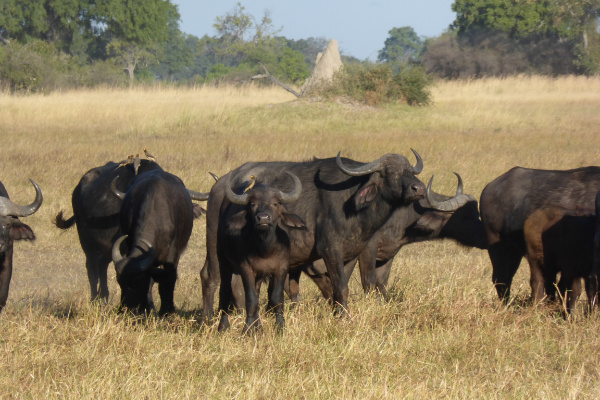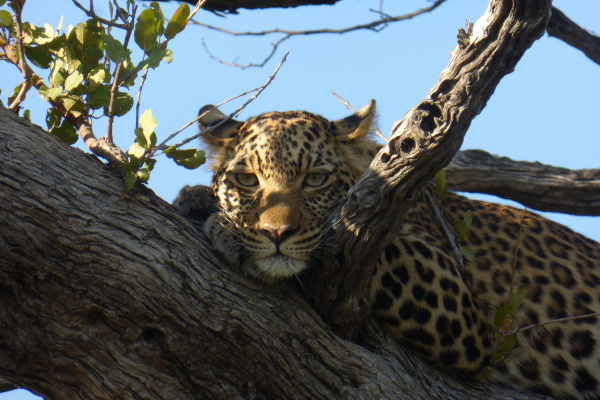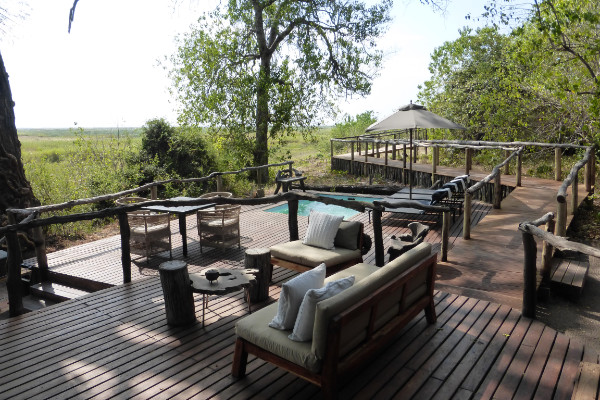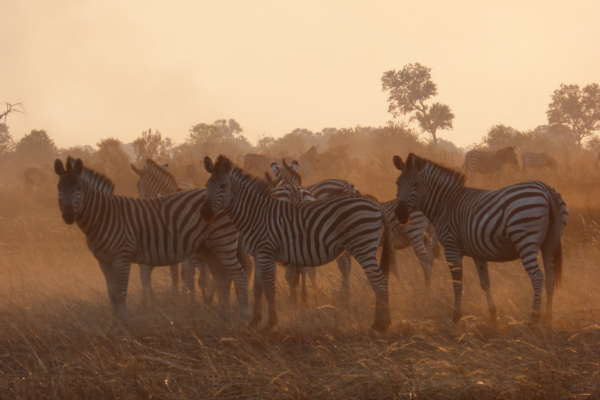
Published 21st Nov. 2023
Reading time
Our Africa specialist James recently ventured into the Botswanan bush for some safari excitement. From sailing down deltas to spotting big cats at night, James has the inside scoop on what makes this corner of Africa so special. Read on for a roundup of his trip and his top tips for travellers planning a trip here…
That it’s absolutely one of the best safari destinations in Africa. When you’re there, it’s all about getting what you pay for – a top-quality wildlife adventure. Out in the savannah, the only other vehicles you’ll come across is one or two from your camp. It’s a world away from crowded spots like the Ngorongoro Crater, where you could find yourself surrounded by 50 vehicles at a single site. Botswana is the place to be for an exclusive, unspoiled wildlife adventure.

Botswana follows a tourism policy that supports a low number of visitors who bring high value into the country, which helps to ensure long-term sustainability. Because of this, Botswana’s wildlife areas are remote and full of vibrant wildlife. You really are treated to a safari experience like no other – I was never in a car with more than six people and got to build a great relationship with the guides and trackers, who really impressed me with their endless wildlife knowledge.
I sailed down the Okavango Delta in a mokoro (a traditional dugout canoe) which was a really magical experience. You get to sit back and relax while a guide uses a pole to push you through the shallow waters. The shore is full of wildlife like long-legged ibis, royal crane and some of the Big Five (elephants, buffalos, lions, leopards and rhinos), although I found that the best chance of seeing these is on a game drive. Speaking of game drives, the nighttime drives were really cool. We used a carefully aimed spotlight to spot the reflective eyes of nocturnal animals. Blue-tinted eyes are the ones you really want to see, as they belong to incredible predator species like the serval cat, genet cat and African wild cat. We certainly saw our fair share of these night-time hunters.

The weather in Botswana allows for year-round game viewing, so unlike other destinations with long rainy seasons, there isn’t a particular time to be avoided. This makes Botswana extra special, as you’re never met with impassable areas or monsoon downpours.
The camps in Botswana offer a very exclusive experience. They’re small in size, with between three and 11 rooms each, and it’s this intimacy and personal service that people pay for. The rooms are in semi-permanent structures constructed from materials like wood, thatch and canvas which have minimal impact on the environment. It’s such an authentic experience, but with all the creature comforts you’d expect from a luxury safari holiday.

Noisy, but in the best way possible. You can hear any number of incredible sounds coming from the bush and it’s not uncommon to be awoken by the sound of a hippo tearing grass from the ground or elephants shaking trees and peeling branches. With your tents zipped up and doors securely closed, there’s absolutely nothing to fear. Just lie back and enjoy the experience.
Sitting around the campfire for pre-dinner drinks. It’s a lovely place to socialise and meet other like-minded, adventurous guests.
Temperatures can be quite cool in the mornings and evenings (especially when the air rushes against you in the vehicles) so thick fleeces and beanies are very welcome. Sometimes you’ll find the camp has left you with a ‘bush baby’ (a soft-coated hot water bottle) in the vehicle as well. Very cosy indeed! Another tip is having an experienced tracker with you to look out for animal tracks. Their ability to spot the smallest evidence of nearby animals will improve the quality of your experience to no end.

Header Image by Grant Ryan | Body Images by James Back

Having spent ample time in beautiful Botswana, our consultants' expertise allows us to tailor each trip to you, whether you’d rather have meerkats scramble over you in the sandy Mkadikgadi Pans or hop on a mountain bike safari in the Mashatu Reserve. We work with incredible guides to ensure you not only see wonderful wildlife but learn about local culture, too. In-country, our Concierges keep things running smoothly, while our trusty team of local partners go the extra mile to make your trip unforgettable. From honeymooners seeking ultimate luxury to multi-generational families needing space, we’ve got your accommodation sorted.
ENQUIRE NOWPractical advice and inspiration for your next trip

Channelling your inner cowboy and heading on a horse safari in Botswana is one of the ultimate safari experiences. With a variety of stunning landscapes available for exploration, it’s an incredible way of getting up close and personal with game in a way that just isn't possible in a traditional 4x4. You won't just be on a safari, you'll be in it. With the contrasting scenes of the Makgadikgadi Salt Pans, Thamalakane River and Okavango Delta in the nation’s arsenal, it's not hard to understand why Botswana horse safaris remain such a popular choice.
9th June 2025 - Botswana Safari & Wildlife

Narrowing down the most beautiful places in Botswana is no easy feat, but we love a challenge. From boundless deserts and rugged marshlands to dazzling salt pans and wild wetlands, the country’s landscapes are truly spectacular. Whether you trundle across the Kalahari’s sandy stretches on a game drive or drift along the Okavango Delta’s flowing waterways on a boating safari, you’re sure to spot some seriously cool wildlife species along the way.
17th January 2025 - Botswana Travel Inspiration

When safari specialists sing their praises for a destination, we can’t help but listen. And our Africa aficionados have a compliment or two for Botswana. They put it up there as ‘one of the best safari destinations in Africa’ and the place to be for an ‘exclusive, unspoiled wildlife adventure’. So, where do you begin? With so many savannahs, wetlands and wildlife-rich reserves to explore, we’ve whittled it down to the four best safaris in Botswana.
15th August 2024 - Botswana Safari & Wildlife

Our team of destination experts will get to know you and your unique requirements for your holiday

We work with you to build an ultra-personalised holiday itinerary with your choice of accommodation, experiences and activities

All of our holidays include little extras designed to make a big difference to your trip, from fast-tracking you through airport check-in and security to our network of local Concierges